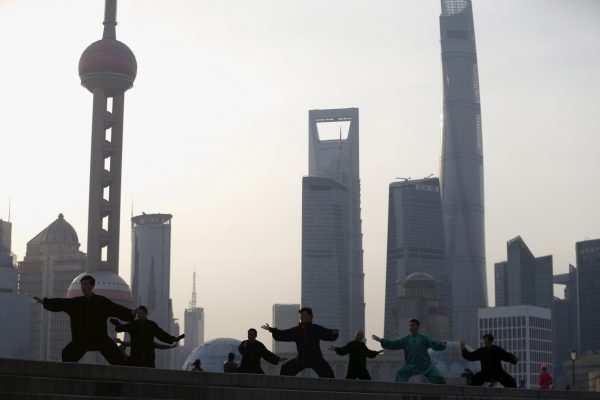Given the backlash in the industrial world against globalisation, the economic and political juncture at which Asian countries find themselves is hardly conducive to a push for further integration. But that’s exactly what’s needed. It’s imperative that Asian integration continues to forge ahead.
Given slower growth elsewhere, Asia’s place as the dynamic heart of the world economy can only be entrenched and reinforced by regional commitment to lowering barriers to the movement of goods, services, capital and people — and, crucially, by investing in the infrastructure that makes integration and connectivity a practical reality. That is as important now to the global trade regime as it is to the success of the Asian development enterprise.
On the infrastructure front, China’s Asian Infrastructure Investment Bank is a welcome initiative, but the sums required to finance the kind of connectivity that Asian economies require is immense, and coordination of infrastructure investment is more important than ever. China’s ongoing financial liberalisation and outward investment will also put the region’s markets and regulators to the test in managing the risks while supporting the financial integration of the region.
This week we launch the ninth volume of East Asia Forum Quarterly which brings together a collection of essays adapted from the forthcoming 38th Pacific Trade and Development Conference volume on Asian integration. Some of the region’s most prominent analysts take stock of integration efforts to date and to chart a course for Asia’s future. The regular Asian Review section features essays on what President Donald Trump means for Asia, the US-China economic relationship, the future of the global monetary system and Chinese investment.
Our lead essay from Ponciano Intal asks whether East Asian regional institutions are up to the test.
‘One remarkable development in East Asia over the past three decades is the emergence of a regional architecture — a coherent network of institutions that work together for prosperity and stability — that has revolved around small and middleweight countries with support from the Pacific’s big powers’ says Intal. ‘What is equally important is that this architecture has been characterised by open regionalism — the removal of trade barriers within the region without discriminating against outsiders — and a cooperative multilateral perspective on security’.
East Asian regional economic architecture is ordered around principles that are under severe challenge by the new US administration and a decisive minority in Europe. It stands for everything that appears to be in total retreat in the industrial world. And what sits at the centre of this architecture is ASEAN — a group of countries often disparaged as the ‘Balkans of the Far East’.
How did ASEAN become the centre of East Asian regional architecture? What chance has it against the tsunami of hostile forces that has been unleashed in the established powers?
As Intal explains, ASEAN’s centrality in the regional architecture developed not because it was an East Asia economic powerhouse but because it provided a structure for political stability that engendered ‘peace, neighbourliness and cooperation among the founding countries’.
ASEAN’s cooperative approach to security — ‘security is best gained not by working against others, but rather by working with them’ — contrasts sharply to the realist ‘balance of power’ approach. The cooperative security approach is defined by an emphasis on dialogue, diplomacy, and consensus. ‘The approach is workable’, says Intal, ‘because it represents a realistic means by which the small and middleweight powers can assume diplomatic centrality in security arrangements involving all major regional powers’.
But this approach is only workable as long as the big powers in the region are in some kind of concord, as they were through the last decades of the 20th century and the first decade of the 21st century, when the priority for all was Asia’s economic development and open markets.
For most of Asia, including China, Indonesia and India, economic development is a work in progress and commitment to international economic integration and connectivity are still their essential and necessary adjuncts. But, as Intal points out, territorial issues in the South and East China Sea have raised regional security uncertainty, while the ascendance of a more nationalist, less open ‘America First’ administration in the United States has dramatically elevated uncertainty in the economic and trade environment.
There is undoubtedly now a bigger load on East Asia’s regional economic and security architecture. Can it bear the load?
Intal reckons that the existing architecture still appears the most robust instrument for managing East Asia’s changing economic and security landscape. The contest among the big powers — China, Japan, and the United States — and the change in the structure of regional economic power means that maintaining peace, stability and prosperity in East Asia calls for them to work with the network centred on the region’s small and middle powers.
Whether that’s stabilising or de-stabilising, of course, depends on the small and middle powers in East Asia stepping up to the mark and demonstrating ‘collectively and concretely that they have a plan for pushing their vital interests in an open regional and world economy, in a fast-changing and more hostile international environment’.
The form that Asian integration will take is still open. The eclipse of the TPP means that the Regional Comprehensive Economic Partnership spearheaded by ASEAN looks to be the only game in town for regional trade and investment liberalisation. If it’s to help turn around the tide against globalisation, RCEP has to be a platform for ongoing cooperation, and not just another ‘noodle bowl’ of Asian economic agreements.
The EAF Editorial Group is comprised of Peter Drysdale, Shiro Armstrong, Ben Ascione, Ryan Manuel, Amy King and Jillian Mowbray-Tsutsumi and is located in the Crawford School of Public Policy in the ANU College of Asia and the Pacific.

